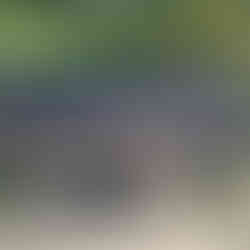'A mis-Guide to ANYWHERE'
- Katalin Trencsényi
- Apr 17, 2020
- 4 min read
Part of the Invisible Diaries series [1]

Week 2 / Day 4
This post is dedicated to Phil Smith and Rachel Summers.
Thank you for the ‘dance’!
Today I went for a walk and found the theatre around me outdoors.
As soon as I closed the gate behind me, and crossed the street, at the corner, I noticed this, handwritten on the pavement with chalk letters under a tree:

A thin and sickly tree, which I passed many times on my way without even noticing it, became the first character inviting me to participate in a performance. A few steps further, I discovered the next sign:

No doubt, I was on a trail! So, I let myself drift on this trail, away from my purposeful ‘daily exercise’, allowing its dramaturgy to unfold and take me on a new adventure. (On my return home I found out that the artist behind these signs is Rachel Summers, who runs Curious Wilds forest school.) I followed Rachel’s signs for a while, stopping at various trees and shrubs, reading her note, observing the tree, exploring and rediscovering my neighbourhood through fresh eyes:
Then I got gently distracted by a new trail to follow: hand-painted rainbows in the windows:
I carried on until I saw a trail of sky-blue discarded plastic gloves, leading to an angry and outspoken socio-critical graffiti about the Tories that I photographed a couple of weeks ago, and posted on my Facebook page, which was now blatantly painted over with fresh grey paint. (My local council knows their priorities!) This social-political, anarchist-activist urban trail culminated in an abandoned mask – poignantly counterpointing the previous, emotional rainbow trail. The experience made me feel as if I was following a special site-specific performance created by Rimini Protokoll.
Carrying on, the next surprise was a modernist haiku I discovered on a gate:

Finishing the round, I crossed the playground and a nearby park, where I discovered contemporary statues, influenced by Christo’s wrapping method:
The disabled park benches recalled a performance I saw a very long time ago, during the Balkan war by a Croatian ensemble. During this site-specific performance, we had to walk along and follow similar red-and-white tape, on which hand-written signs were fastened: ‘no trespassing’, ‘no congregating’, ‘no balls’, ‘no playing’, ‘no smiling’, ‘no kissing’, ‘no good morning’, etc. Every step we took, as we moved on, following the tape and the signs, we were deprived of more and more things, that used to belong to us before. It was a visceral experience. By the end of it I felt physically, deep in my cells, what it meant to live during a war.
When I returned home from the spring walk, pondering about the performative experience to which I had been treated, I noticed Phil Smith’s article (who is one of the co-authors of the book from which I am borrowing the title of today’s post): ‘Walking in a time of virus’. In this article, Phil (a dear colleague and friend) encourages us to adhere to a different way of social distancing when outside: “We can deploy another kind of ‘social distancing’ during our walking; which is to walk at a distance from the ‘norms’ that operate perniciously in our societies.”
In his article, Phil encourages us to ‘disrupt the optic flow’ and ‘start noticing’, so to become ‘a choreographer of your dance’. His words resonated deeply with me, they sounded like a beautiful epilogue to my ‘mis-guided’, performative walk or even dance around my neighbourhood: “Every street you walk down is a treasure of geology and materials, each window is a museum of symbols, every tree is a drama of buds, enkissings, wounds and blossoms.”
Since the lockdown, it seems that performance has not been locked up, waiting for our return in those temporarily empty buildings we used to call theatres, but has followed us home, and is now everywhere around us if we care to look.
Note:
[1] As a playful gesture coming from my desire to reconnect with the thoughts and discourse offered by these eminent thinkers, I decided to choose for each title of my journal entries the title of an essay on dramaturgy I found inspiring. I hope their authors won’t mind me recalling their work this way. Today’s title is borrowed from an inspirational book by Stephen Hodge, Simon Persighetti, Phil Smith, Cathy Turner, Tony Weaver, published by Wrights & Sights, 2009.
Images courtesy of Katalin Trencsényi.
Katalin Trencsényi is a dramaturg and researcher of Hungarian origin, living and working in London. Before Covid (BC), her areas of interest were contemporary theatre and performance, dance dramaturgy, collaborative processes, and multi-modal play development. Now she is more interested in thinking about epidemic and theatre. As an independent dramaturg, Katalin has worked with the National Theatre, the Royal Court Theatre, Corali Dance Company, Company of Angels, amongst others. Katalin has taught dramaturgy internationally: including Australia, Belgium, Canada, Russia, and the US, and from 2015 to 2019 worked as a tutor at the Royal Academy of Dramatic Art (RADA). Katalin is the author of Dramaturgy in the Making. A User’s Guide for Theatre Practitioners (2015), editor of Bandoneon: Working with Pina Bausch (2016), co-editor of New Dramaturgy: International Perspectives on Theory and Practice (2014), and editor of the dramaturgy section of the global theatre portal, TheTheatreTimes.com.
Until the pandemic outbreak, Katalin was working as part of the Scientific Team (with Guy Cools, Maja Hriešik, and Anne-Marije van den Bersselaar), coordinating a two-year research and training project supported by a Creative Europe grant: Micro and Macro Dramaturgies in Dance. Now, the project’s future – just as the future of many projects in Europe and beyond – is uncertain.

















































Comments